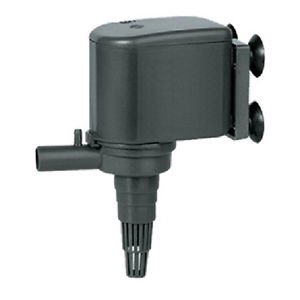Choosing a Saltwater Aquarium Filter
In the article you will find some basic information on Choosing a Saltwater Aquarium Filter.

Contents
- 1 A Primer on Marine Fish Tank Filtration
- 2 Where Does the Aquarium Filter Go?
- 3 In-Tank Aquarium Filters
- 4 Hang-on-Back (HOB) Aquarium Filters
- 5 Sump-Based Aquarium Filters
- 6 Types of Saltwater Aquarium Filtration
- 7 Mechanical Filtration for Marine Aquaria
- 8 Saltwater Aquarium Biological Filtration
- 9 Chemical Filtration for Saltwater Tanks
A Primer on Marine Fish Tank Filtration
A saltwater aquarium filter is necessary to remove potentially harmful material from the fish tank water in order to insure the health and beauty of the aquarium. There are many different ways to filter a saltwater fish-only or reef tank, and most aquarists will end up using a combination of filtration devices and methods.
Where Does the Aquarium Filter Go?
When choosing a saltwater aquarium filtration system, the first decision the aquarist needs to make is where the filter itself will go. In general, the aquarist has three choices of where to place the aquarium filter:
- Inside the Tank
- Hanging on the Back of the Tank (HOB)
- In the Sump
Deciding where to put the tank will, at least in part, depend on the type of tank one has and how much space is available.
In-Tank Aquarium Filters
In-tank filters are the least efficient filters for a saltwater aquarium, but they also take up the least space. For a small tank in a small space, an in-tank filter may be a good choice so long as the aquarist is very careful to not overstock or overfeed the tank.
Hang-on-Back (HOB) Aquarium Filters
HOB filters are, in most cases, more efficient than in-tank filters when it comes to filtering a saltwater aquarium. In addition, HOB filters are easier to maintain than in-tank filters, and they offer more flexibility. A good HOB filter, combined with an HOB protein skimmer and perhaps an HOB substrate reactor is a good system for many small to mid-sized saltwater fish tanks if there is not room for a sump.
Sump-Based Aquarium Filters
Sump-based filtration is the best type of filtration for a saltwater tank, but it does require more space and more equipment. The sump is usually located below the tank in the aquarium cabinet, although it is possible to have it in an adjacent room or even in the basement. Because additional plumbing and equipment is necessary for the water to flow to the sump and then be pumped back to the aquarium, sump-based filtration is generally the most expensive filtration option.
Sump-based filtration for a saltwater aquarium usually includes a filter sock, filter sponge, protein skimmer, and substrate reactor(s). It may also include a wet-dry filter or a fluidized bed filter, as well as other components that assist in the maintenance and operation of a saltwater aquarium.
Types of Saltwater Aquarium Filtration
Regardless of where the filtration equipment is installed, most aquarist will want to rely on a combination of three distinct methods of filtration. They are:
- Mechanical Filtration
- Biological Filtration
- Chemical Filtration
Mechanical Filtration for Marine Aquaria
Mechanical filtration is the type of aquarium filtration that many people think of first. In mechanical filtration, particulate matter is captured in a filter media to then be removed by the aquarist during regular aquarium maintenance. Good examples of mechanical filtration include filter socks, protein skimmers and filtration media such as filter floss, sponge or mesh.
Saltwater Aquarium Biological Filtration
Biological filtration is arguably the most important type of filtration in a saltwater aquarium. The most common biological filter is live rock that is placed in the aquarium itself (usually around one pound per gallon). The live rock is then colonized by bacteria that help to biologically filter the aquarium water. As such, anything added to the system that can be colonized by the proper species of bacteria may be considered a biological filter. Some aquarists employ a fluidized bed filter for biological filtration.
Chemical Filtration for Saltwater Tanks
Chemical filtration occurs whenever a substance is added to the aquarium that filters the water through a resulting chemical process. Chemical filtration often occurs in a media bag or, better, in a substrate reactor that hangs on the sump or even on the back of the aquarium itself. Popular chemical media includes activated carbon and other absorbents designed to remove phosphates, silicates, toxic metals, acids, and other impurities.



